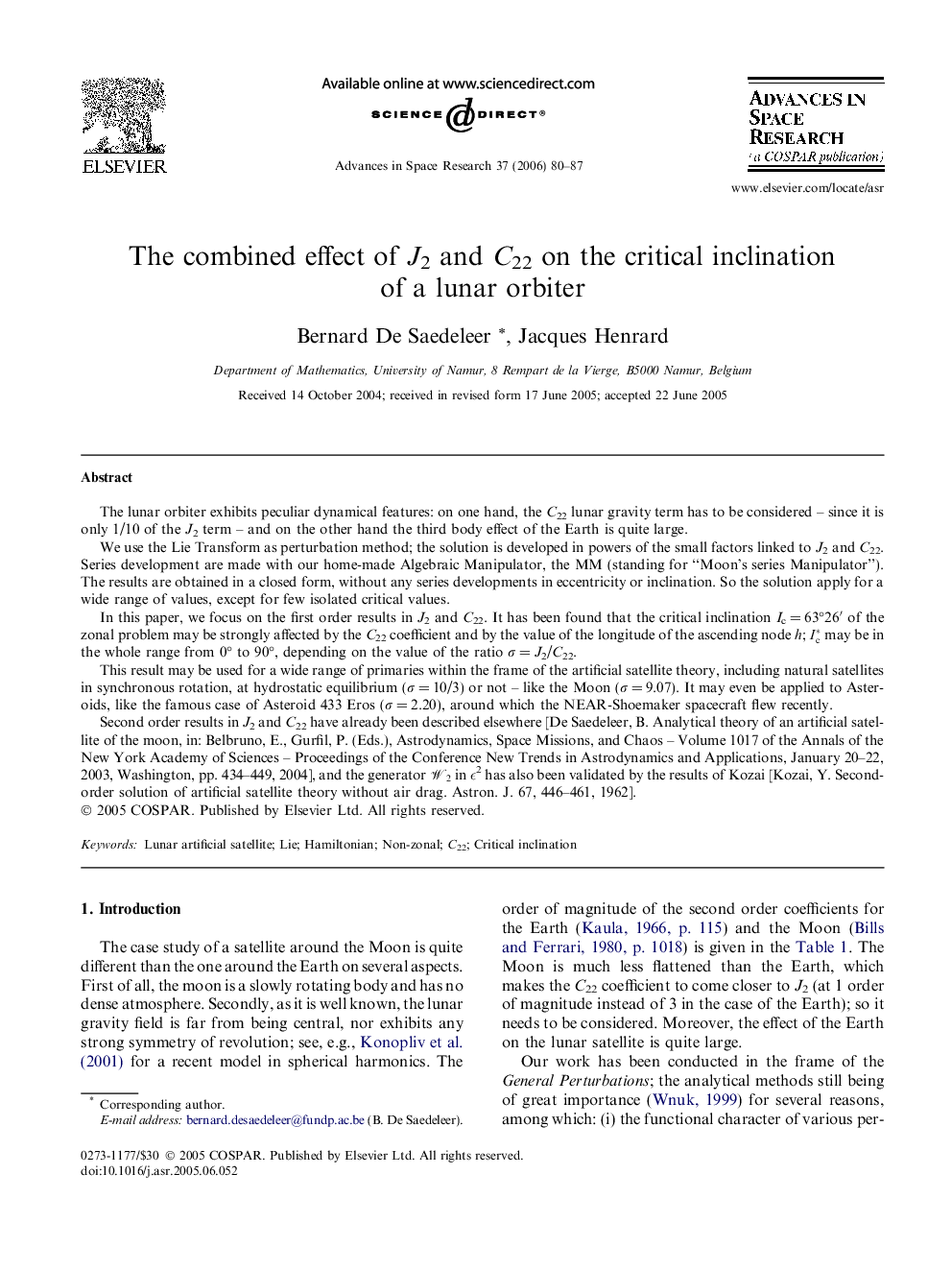| Article ID | Journal | Published Year | Pages | File Type |
|---|---|---|---|---|
| 1767515 | Advances in Space Research | 2006 | 8 Pages |
The lunar orbiter exhibits peculiar dynamical features: on one hand, the C22 lunar gravity term has to be considered – since it is only 1/10 of the J2 term – and on the other hand the third body effect of the Earth is quite large.We use the Lie Transform as perturbation method; the solution is developed in powers of the small factors linked to J2 and C22. Series development are made with our home-made Algebraic Manipulator, the MM (standing for “Moon’s series Manipulator”). The results are obtained in a closed form, without any series developments in eccentricity or inclination. So the solution apply for a wide range of values, except for few isolated critical values.In this paper, we focus on the first order results in J2 and C22. It has been found that the critical inclination Ic = 63°26′ of the zonal problem may be strongly affected by the C22 coefficient and by the value of the longitude of the ascending node h ; Ic∗ may be in the whole range from 0° to 90°, depending on the value of the ratio σ = J2/C22.This result may be used for a wide range of primaries within the frame of the artificial satellite theory, including natural satellites in synchronous rotation, at hydrostatic equilibrium (σ = 10/3) or not – like the Moon (σ = 9.07). It may even be applied to Asteroids, like the famous case of Asteroid 433 Eros (σ = 2.20), around which the NEAR-Shoemaker spacecraft flew recently.Second order results in J2 and C22 have already been described elsewhere [De Saedeleer, B. Analytical theory of an artificial satellite of the moon, in: Belbruno, E., Gurfil, P. (Eds.), Astrodynamics, Space Missions, and Chaos – Volume 1017 of the Annals of the New York Academy of Sciences – Proceedings of the Conference New Trends in Astrodynamics and Applications, January 20–22, 2003, Washington, pp. 434–449, 2004], and the generator W2W2 in ϵ2 has also been validated by the results of Kozai [Kozai, Y. Second-order solution of artificial satellite theory without air drag. Astron. J. 67, 446–461, 1962].
